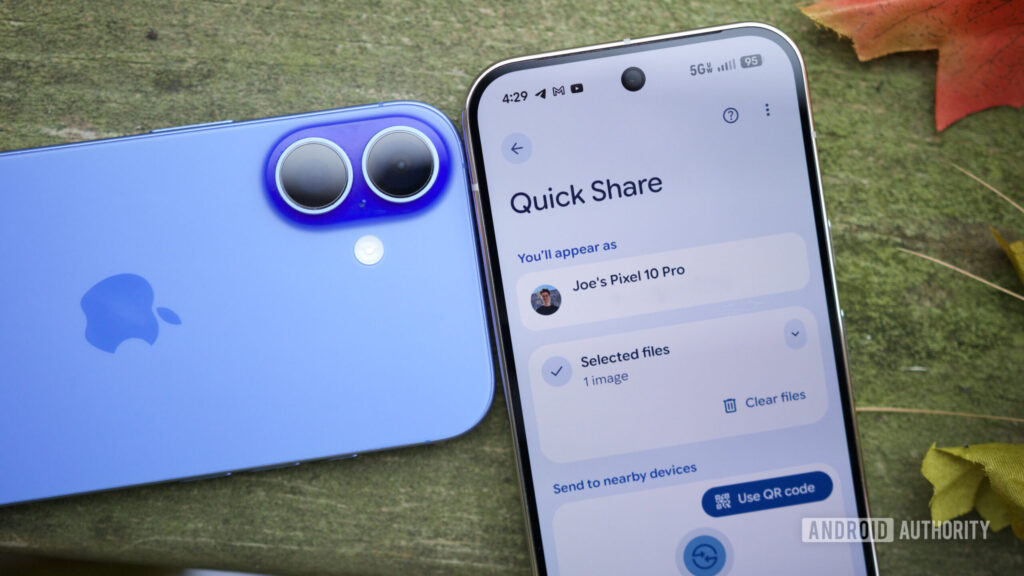TL;DR
- Qualcomm has said that it’s bringing Pixel 10-style AirDrop support to Snapdragon-powered phones.
- This means many more Android phones could soon support Quick Share-AirDrop file transfers.
- The chipmaker says it’ll enable support on Snapdragon devices in “the near future.”
Google shocked everyone last week by quietly flipping the switch on true AirDrop support for the Pixel 10 series. But if you’re feeling left out because your Android phone can’t do the same just yet, you might be happy to hear what Qualcomm has to say. The chipmaker has now confirmed that it’s working to bring this cross-platform file sharing feature to Snapdragon-powered phones, massively widening the pool of Android devices that may soon join the Quick Share-AirDrop party.
Don’t want to miss the best from Android Authority?
Replying to Google’s announcement on X, Qualcomm said, “Can’t wait for people to use this once enabled on Snapdragon in the near future.” The company didn’t go into details about which Snapdragon-powered phones will support AirDrop transfers with iPhones, or if it’s collaborating with Google somehow to enable the new interoperability on its Snapdragon chipsets. However, Google had previously mentioned that it would “work with industry partners to make connecting and communicating across platforms a secure, seamless experience for all users.”
Meanwhile, Nothing is also getting in on the action. The company announced last week that it’s working to bring the functionality to its phones, making it one of the first OEMs other than Google to publicly commit to supporting cross-platform sharing. Meanwhile, Google has already promised to improve the experience and expand the feature beyond the Pixel 10 series to more devices.
All of this momentum comes after Google quietly built the bridge to AirDrop. As we understand, some of the speculation around why this became possible doesn’t quite line up with the facts. There’s been chatter that the EU has forced Apple to deprecate its proprietary AWDL protocol, the secret sauce behind AirDrop, as part of the Digital Markets Act. But a closer look at the DMA interoperability documents shows no such requirement. The EU simply mandates that Apple implement Wi-Fi Aware to ensure basic interoperability, and Apple has already done that.
That alone doesn’t mean AWDL had to be retired. In fact, the same documentation clearly states that AWDL and Wi-Fi Aware are not compatible, and the two can coexist. Apple still uses AWDL for AirDrop today. Which is why the bigger twist here is that Google didn’t rely on Apple abandoning AWDL at all; it actually added AWDL support directly into Quick Share.
Now, with Qualcomm stepping in, the feature may no longer remain a Pixel perk. In other words, if you are jealous of the Pixel 10’s new superpower, you might not have to feel that way for too long. That said, we’ll have to wait and see how Qualcomm plans to bring this support to Snapdragon-based Android devices.
Thank you for being part of our community. Read our Comment Policy before posting.

